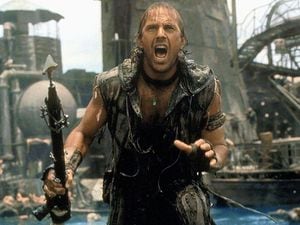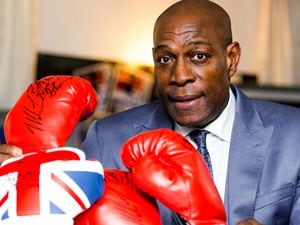Film Talk: Looking Back – Into the deep with Waterworld
With the release of Meg 2 this week, it's time to look at a classic that was also looking to make waves.

Directed by Kevin Reynolds and co-written by Peter Rader and David Twohy, 1995’s Waterworld was a post-apocalyptic action project of a truly monumental scale.
It was one of Hollywood’s most ambitious movie-making efforts of the 20th century and, indeed, remains much more than a drop in the cinematic ocean.
Based on Rader’s original 1986 screenplay, Waterworld starred Kevin Costner as its rough and ready hero. With a budget of $172 million (and a total outlay of $235 million including marketing and distribution costs) it was, at the time, the most expensive film ever made.
Set in a dystopian future when the melting of the polar ice caps has caused almost all land on earth to be submerged, the plot of the film focuses on a depleted human population savagely competing for resources, and the search for the almost mythical ‘Dryland’ that can support them.
Distributed by Universal Pictures and produced by Costner along with Charles Gordon and John Davis, Waterworld was under immense pressure to be a commercial success. But would it prove popular with audiences, and make enough money to justify its colossal cost?
In a future where the Earth is engulfed with water, drifters sail across the seas on self-made water craft, trading for supplies. Communities of survivors live in floating atoll towns, and a force of evil pirates known as ‘Smokers’ pillage their way across the seascape in search of the rumoured Dryland.
Arriving at an atoll, a mysterious drifter only known as ‘The Mariner’ (Costner) is sentenced to death when its people discover he is a mutant – possessing webbed feet and able to breathe under water via gills hidden behind his ears.
When the atoll is attacked by the Smokers and their feared leader The Deacon (Dennis Hopper), a woman named Helen (Jeanne Tripplehorn) and her adopted daughter Enola (Tina Majorino) convince The Mariner to lead them to Dryland, believing The Mariner knows of its location.
However, any journey will not be easy for the trio, who are pursued by The Deacon and his Smokers when The Mariner learns the tattoo on Enola’s back is in fact a map that could lead them to salvation...
With much hanging on its release, Waterworld received mixed reviews. The film was also, alas, unable to recoup its massive budget at the box office, although it did later become profitable due to video and other post-cinema sales. Indeed, Waterworld’s post-release story was far from all bad, with the flick nominated for the Academy Award for Best Sound.
In general, while it may not be the most gripping post-apocalypse movie ever made, Waterworld is a fun yarn with an interesting concept at its core.
Costner’s brooding performance echoed that of many other roles he has starred in, but was fitting for this film’s grumpy and misunderstood loner.
With plenty of fast-paced action sequences, Waterworld is a flick that if given chance will entertain you, even if it doesn’t exactly break your world in two. As much as anything, this film is a testament to the grand and ever-reaching philosophy of big budget filmmaking. Even if Waterworld overreached its grasp, it stands in tribute to the idea of an uncompromised vision being translated from storyboard to screen. While this approach is not always a financially sensible course, it is often by ‘going big or going home’ that the boundaries of filmmaking are pushed. Without movie production that takes monetary risks and pushes the limit, certain developments in cinema – particularly in the context of special effects and stunt work – would never be reached. As such, many celebrated masterpieces of film owe a great deal to flicks like Waterworld, and for this, we salute it wholeheartedly.





